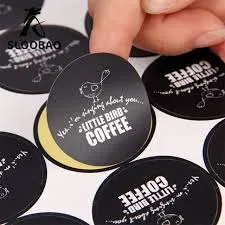The Evolution of Burger Box Packaging
In the realm of fast food, where convenience meets culinary delight, burger box packaging plays a pivotal role. The burger, an iconic staple in many diets around the globe, deserves packaging that not only protects it but also enhances the overall dining experience. As we explore the evolution of burger box packaging, we can appreciate how it has transformed over the years to meet the changing needs of consumers, businesses, and environmental considerations.
1. Historical Context
Traditionally, burgers were often served on simple plates or wrapped in paper. As fast food chains began to proliferate in the mid-20th century, so too did the need for more efficient and practical packaging solutions. The advent of dedicated burger boxes marked a significant change, allowing for a more streamlined and hygienic way to serve burgers. These boxes provided the necessary containment to keep the ingredients intact while also being easy for customers to carry away.
2. Functional Design
The primary purpose of burger box packaging is functionality. A well-designed burger box must accommodate various burger sizes, prevent spills, and retain heat. Modern burger boxes are often made from materials like cardboard, which is lightweight yet sturdy enough to hold the burger, fries, and condiments. Many designs incorporate a foldable structure that is quick to assemble, allowing fast-food employees to serve customers with efficiency during peak hours.
Moreover, burger boxes now often feature compartments for additional items like sauces or sides. This thoughtful inclusion enhances customer satisfaction by providing a complete meal experience in a single package.
3. Branding and Customization
In today’s competitive market, branding is essential for any business, and burger box packaging serves as a powerful marketing tool
. Custom graphics, logos, and vibrant colors on the packaging can help establish brand identity and recognition. Fast food giants invest in unique designs that reflect their brand’s ethos, often featuring catchy slogans or promotional imagery that entice customers.burger box packaging

Moreover, social media has influenced packaging design, with brands opting for visually appealing boxes that customers will want to share online. Creative packaging can serve as an advertisement, encouraging consumers to capture and post images of their meals on platforms like Instagram and Facebook, ultimately increasing brand visibility.
4. Sustainability Concerns
In recent years, environmental concerns have significantly impacted how burger box packaging is designed and produced. As consumers become more eco-conscious, the demand for sustainable packaging solutions has risen. Many fast-food chains have begun to transition to biodegradable or recyclable materials, striving to reduce their carbon footprint.
Innovative materials, such as plant-based plastics and compostable containers, have entered the market, allowing businesses to meet the sustainability expectations of their customers. This shift not only helps protect the environment but also positions brands as responsible players in the industry, which can enhance customer loyalty.
5. Future Trends
Looking ahead, the future of burger box packaging seems poised for further innovation. Industry experts predict a rise in the use of smart packaging technology, such as QR codes that customers can scan for nutritional information or special offers. Additionally, advances in materials science may lead to even more eco-friendly options that are both effective and sustainable.
Moreover, as the global pandemic has altered consumer behavior, we may see an increase in demand for takeout and home delivery solutions. This could push companies to develop packaging that better maintains food temperature and freshness during transit.
Conclusion
Burger box packaging is not merely a means of holding food; it’s a dynamic aspect of the fast-food experience that intertwines functionality, branding, and sustainability. As the popularity of burgers continues to grow and consumers become more discerning, the packaging will undoubtedly evolve to meet these new challenges. The journey of burger box packaging reflects broader societal trends, making it a fascinating topic in the ever-changing landscape of food service. With advancements on the horizon, we can expect even more exciting developments in how burgers are packaged and enjoyed.



